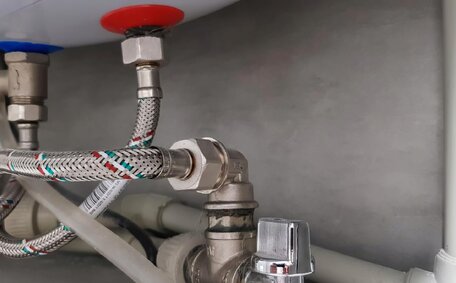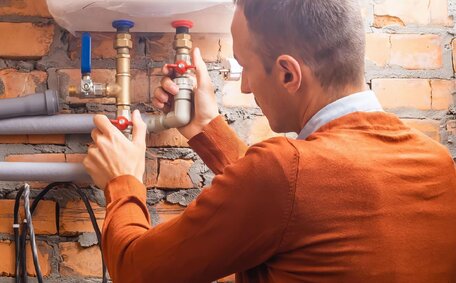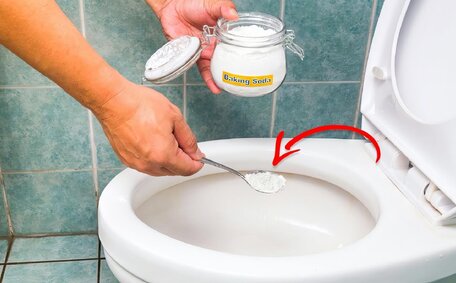Why Pipe Relining is Preferable to Pipe Replacement
Trenchless pipe relining offers a modern solution to traditional pipe replacement and eliminates the need to excavate your garden, maintaining flow capacity with minimum disruption.
Pipe relining offers several key benefits over traditional replacement, especially when addressing blocked drains:
- Less excavation - pipe relining can be done through only small access points instead of digging trenches.
- Lower cost - Pipe relining is a cost-effective alternative to full pipe replacement, offering significant savings.
- Faster with less disruption - Pipe relining takes less than a week, typically 1-2 days, compared to several weeks for replacement.
- Protects landscaping - Relining preserves your garden’s aesthetic by avoiding excavation.
- Neater and cleaner - Relining creates no open trenches marring your property.
- No loss of use - You can still use the plumbing during the relining process.
CCTV drain cameras and epoxy resin technology enable non-invasive pipe restoration. Considering pipe relining as a beneficial alternative to full replacement is a decision we can assist you with.
How Weather Impacts the Pipe Relining Process
Weather conditions can significantly impact the pipe relining process, especially here in North Epping, Sydney. Seasonal variations in soil moisture and temperature can influence the efficiency of the drain relining process.
Summer’s compact soil may obstruct relining tube insertion for deep pipes, but the warm weather facilitates quicker epoxy resin curing.
In contrast, winter’s lower temperatures slow the epoxy hardening process, requiring more time for it to cure. But the higher rainfall keeps the soil softened, which facilitates pushing the liner through pipes.
Spring and autumn offer the best conditions for pipe relining, with moderate soil moisture and temperatures conducive to effective work. The terrain was very conducive, not too compacted or saturated, enabling a straightforward liner installation. And the epoxy resins cure at an optimal rate.
Periods of high rainfall such as during storm season raise the water table, which can affect your water supply close to ground level. This increases hydrostatic pressure against your sewer and storm water pipes that may suffer from burst pipes or invasive tree roots. Sewer pipe relining before storm season can strengthen pipes and mitigate potential damage.
Ultimately, Our plumbing services expertly conduct pipe relining year-round in North Epping. We provide detailed planning to schedule pipe relining during spring or autumn for efficient and seamless restoration.
Avoiding Pipe Relining in Winter
Winter can present some unique challenges when it comes to pipe repair and relining that require special planning and preparation.
The colder temperatures cause the ground to become harder and more compact. This may complicate the insertion of liners into deep underground pipes. Frozen ground presents a barrier, necessitating greater force for liner installation.
Frost in the early mornings and shorter daylight hours in winter mean technicians have less ideal working conditions. Careful planning is essential to ensure there’s adequate time for gas hot water installation to efficiently run the liner into the pipe for proper epoxy resin curing.
Speaking of curing, the cold weather slows the epoxy curing process. Chemical reactions that harden the resin work slower at lower temperatures. Anticipate extended curing times in cooler seasons, typically an additional day or two compared to warmer seasons.
Understanding winter relining preparations is crucial to avoid the need for emergency services. Ensuring the site is heated, tented, and ready, mastering what you need to know for utilising hot water or steam to thaw pipes, and pre-warming resins before installation can all diminish the winter’s chill. Insulated liners and cold-climate resins are used to ensure the hot water system remains secure in winter conditions.
Although winter conditions invoke inquiries such as 'what need we consider for pipe relining?', the task can still be accomplished effectively. The key advantages make choosing pipe relining the undeniable superior option compared to pipe replacement. By scheduling services during the least cold periods of winter and using appropriate materials and techniques, reliable pipe restoration is achievable all year round.
Challenges of Pipe Relining in Summer
Hot and dry summer conditions require unique preparations for pipe relining to address challenges effectively.
Summer heat can harden the soil, making it challenging to push the relining tube through buried pipes. Technicians face added risk from the intense heat during summer relining tasks.
The hot weather accelerates the curing process of epoxy resins. When it comes to installation, while the heat speeds things up, technicians need to operate quickly to install the liner before the resin hardens in the tube. Careful timing is essential for handling your hot water system throughout the relining process.
High temperatures also increase the chances of heat damage or warping to PVC or other plastic pipes. Technicians can also prevent overheating pipes, by being sensitive to temperatures when using a hot water heater or steam in preparation for relining.
Adequate hydration and rest are essential to safeguard workers from heat-related illness. Strategic scheduling helps avoid the heat’s peak, enhancing service efficiency.
Considerate planning mitigates dehydration risks and accounts for faster curing times and heat damage risks, making summer pipe relining feasible. But opting for services in the milder seasons of autumn or spring can avoid these extra hot weather challenges.
Signs Your Pipes Need Relining
There are several telltale signs that indicate your pipes may be in need of relining:
- Frequent clogs or slow drainage often signal buildup, cracks, or tree root intrusions.
- Leaky pipes - Water spots on walls or ceilings suggest water damage from pipe leaks.
- Low water pressure - Reduced flow from your water taps or showerheads can mean corroded pipes.
- Discoloured water - Rusty, brown, or odd-coloured water points to corroding pipes.
- Strange smells - Unpleasant sewage odours coming from your drains immediately hint at possible damage.
- Rodents or pests - Mice or insects being active near the sewer pipe can mean there are cracks they’re entering.
- Visible root damage - Exposed roots growing into and around pipes.
- Noticeable dips or damage - Sagging pipes, cracks, holes and other visible issues.
- Ageing pipes - Old metal or clay pipes past their lifespan risk collapse.
- Previous repairs - Sections with prior patch repairs may need full relining.
If you’re experiencing any of these pipe problems in your North Epping home, contact our emergency plumbing services to have your pipes checked and determine if trenchless relining is the right solution!
Pipe Relining Technology and Process Overview
Pipe relining Sydney wide utilises advanced trenchless technology to renovate plumbing pipes from the inside out. The process entails more than just minimal digging; it offers a means to mend your plumbing system without major disruption to your household.
The process begins with a drain camera inspection to pinpoint the condition and location of the pipe damage. Technicians promptly appear, and when it comes to preparation, they came out armed with the necessary gear to clean and prime the old pipe for the relining process.
A flexible epoxy-coated liner, soaked in resin, can be inserted and expanded within existing plumbing gas pipes, fitting snugly against their interior walls. The liner forges a new seamless pipe within old structures, crafting a smooth, seamless and enhanced infrastructure within your plumbing system.
As the resin cures into durable plastic, it restores flow capacity and seals leaks. The pipe relining process, completed in 1-2 days, minimally disrupts your home or yard.
Pipe relining is just one method where we can help prevent major upheaval and landscape restoration, all without the need for upturning your garden. With limited access points and reduced equipment necessary, there’s no need to worry; it’s an environmentally sound method that ensures the old saying 'sight out mind’ doesn’t apply to your home’s pipe health.
Preparing for a Pipe Relining Project
Preparing adequately for a pipe relining project is key to ensuring the process goes smoothly. The first step is what you need to do to schedule a full inspection of your plumbing system using a drain camera. This approach ensures that issues with your pipes remain in sight, not out of mind, enabling accurate evaluation and informed decisions.
Upon project confirmation, we’ll coordinate timing based on weather, manage equipment delivery, and guide you in preparing your pipes. This may involve clearing access to pipe entry points, removing items around the pipes, or adjusting landscaping if needed.
Prior to the service, ensure the pipes are clear of debris. Our team will also need access to your water supply and power sources during installation. Let neighbours know about potential disruptions as well, such as those to driveway access, while we get your pipes relined.
With exhaustive planning, we provide a professional pipe relining service that minimises disruption. Our team manages all aspects, ensuring a seamless restoration of your plumbing to top condition without excavation.
What to Expect During and After Pipe Relining
Being informed about the pipe relining process ensures effective preparation. Grasping the duration needed to address a blocked sewer drain through pipe relining, commonly 1-2 days, helps in orchestrating your schedule.
On the first day, our plumbers skilfully come out equipped with tools such as CCTV cameras to ensure your plumbing system is pristine and ready. Following pipe inspection, our plumbers deftly remove debris and prepare the new pipe liner for insertion.
You may notice brief water interruptions as the particular section pipe undergoing relining is temporarily segregated. The epoxy resin-saturated liner is inserted into the pipe, and UV lights cure the resin, creating a new, smooth inner pipe surface.
The second day involves finishing the curing process and reconnecting all plumbing. Our expert technicians conduct meticulous final CCTV inspections, guaranteeing a flawless installation. Thoroughly cleaned up after completion, the restoration of access points concludes the project.
Following relining, it’s advisable to go easy on the pipes to allow the epoxy to fully set. Avoid flushing wet wipes or pouring fats and harsh chemicals down drains. With restored flow capacity, your plumbing system will now run smoothly, a reminder that 'out of sight’ should not mean 'out of mind’ when it comes to maintenance.
If leaks or issues arise, promptly contact us; our exemplary team is ready to assist. With no particular maintenance required, your relined pipes should endure for decades, proving to be a reliable solution. We advocate for pipe relining to minimise disruption, allowing your everyday activities to continue uninterrupted.
After inspecting the pipe, they’ll clean out debris and prepare the liner for are some best practises to follow post-reline:
- Refrain from pouring fats, oils, or harsh chemicals down drains to prevent pipe buildup.
- To prevent clogs, use sink strainers to catch food scraps and debris before they get into your pipes.
- Don’t plant trees or invasive vegetation near pipes - Roots can damage pipes.
- Check for leaks and immediately repair any dripping faucets or pipes.
- Flush pipes regularly with water if not used often to clear any buildup.
- Have a plumber inspect relined pipes annually - Catch potential problems early.
- Update any leaking pipe fittings, couplings, or valves.
- Repairfoundation issues, buckled sections, or overly sagging pipes.
- Watch for pooling water, which may indicate pipe leaks.
- Maintain recommended water pressure - Excessive pressure strains pipes.
Following these maintenance strategies will prolong the life of your relined plumbing. Proactive measures safeguard your investment and avert expensive repairs. If you detect any issues, our team is ready to conduct inspections and make necessary repairs.
Post-Relining Pipe Maintenance Best Practises
d the surrounding suburbs. Our experienced and skilled team has addressed various plumbing issues, performing countless successful pipe relining projects, restoring deteriorated systems non-disruptively.
Clogs, leaks, loss of water pressure, rusty water, and sewage smells are symptoms of broken pipes requiring restoration. Instead of unsettling your garden through conventional means, we offer comprehensive pipe relining services as an unparalleled option.
This stops leaks and restores flow capacity, answering the question of what pipe relining can do without digging up your yard or home foundations.
We employ advanced CCTV technology for pipe inspections and high-grade epoxy resins for relining. Our team delivers advanced pipe relining solutions ensuring a quick, effective process with minimal disruption to your home.
Take advantage of our plumbing service to arrange a comprehensive sewer pipe inspection. We’ll evaluate any complexities and inform you if trenchless relining is suitable. As leading experts in pipe relining across Sydney, we have the knowledge and experience to restore your plumbing system to optimal working order.
How We Can Help With Your Pipe Relining Project
Our expertise at North Epping Plumbing makes us the go-to local specialists in pipe relining, serving North Epping and the eastern suburbs with outstanding proficiency.






